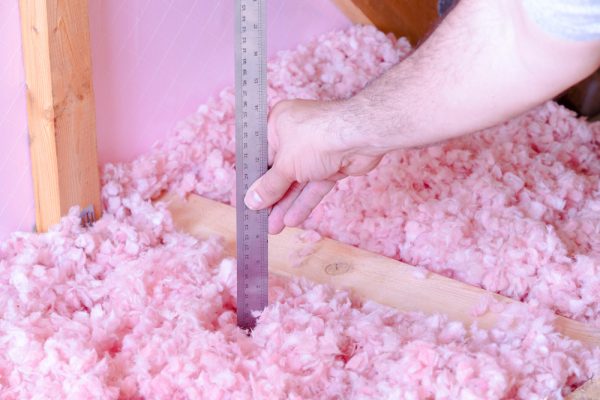Blog

With winter bearing down on us all, now may be a fine time to peek into the attic to check on your insulation.
A well-insulated roof evenly distributes warmth throughout a home, cuts down on heating costs, and prevents ice dams. Some experts have estimated that new insulation saves anywhere from 10% to 50% on heating bills. Plus, good insulation means cool air stays inside during the hot summer months.
Types of insulation
If you are not sure what you have, you can always talk to a professional, but here are some ways to identify your current insulation type.
1. Loose fill
Loose fill insulation is either spread out or blown into place. It is usually used for attics with irregular joist spacing (not 16 or 24 inches), obstructions, or to fill gaps and cover existing material. Common materials include fiberglass, cellulose, and mineral wool.
- Fiberglass is the lightest material, but it requires a thicker layer to work properly. It’s typically yellow, white, or brown.
- Cellulose is the most common, but it should not be allowed to absorb any moisture due to the risk of mold and mildew. Cellulose insulation tends to look gray or brown.
- Mineral wool is naturally fire resistant, but it is more expensive. It looks gray or white and can mimic long, stringy wool.
2. Rolls
These are the thick, flexible strips of material referred to as “batts.” They work best when joist spacing is a standard width and there is plenty of headroom for the installation process. Common materials include fiberglass, cellulose, mineral wool, and cotton.
- Fiberglass is very commonly used. It may be a mild skin and lung irritant if touched, and it does not hamper airflow as well as other materials.
- Cellulose is treated for insect and fire resistance. However, it is not produced by all manufacturers.
- Mineral wool is naturally fire resistant, but it is more expensive.
- Cotton blocks airflow and sound, but it is more expensive than other options.
R-Values
R-value refers to how much is required to meet a standard level of insulation. The recommended R-value target for Oklahoma ranges from R30 to R49. This means that if a material’s R-value is three, then ten inches of insulation would be required to meet the minimum value of R30.
The manufacturer should be able to give you more information about the R-value, and so can the professional you hire to install your new insulation. If you should decide to do the installation yourself, there is much more to consider. This Old House has a helpful guide if that is the case.
If you notice any potential roofing issues, give us a call at 405-359-3951 or send an email to info@landroofingokc.com for a free inspection or estimate.

Let's Talk
Get in touch to get started on your roof today. We are happy to answer any of your questions. Feel free to schedule your free roof inspection as well.
